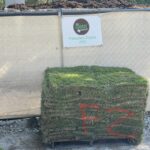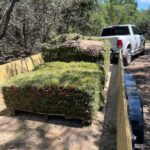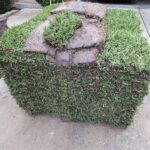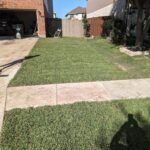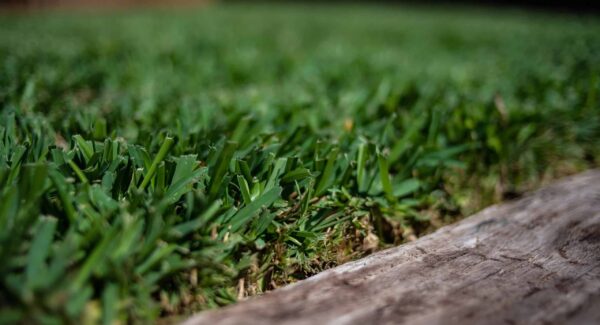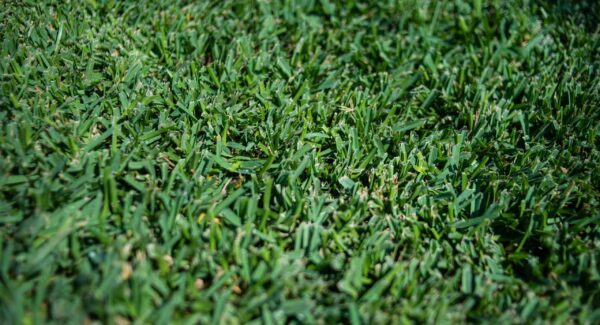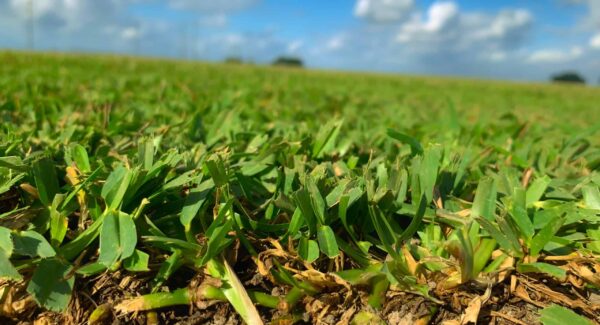Everything You Need To Know About St Augustine Grass Sod in Texas
St. Augustine is a robust perennial grass popular in home lawns and shadier parks. It is commonly used in Texas because of its ability to survive our hot, dry summers. In this handy guide, follow along as we share answers to the most commonly asked questions about St. Augustine grass and discover if this type of grass is a good choice for you!
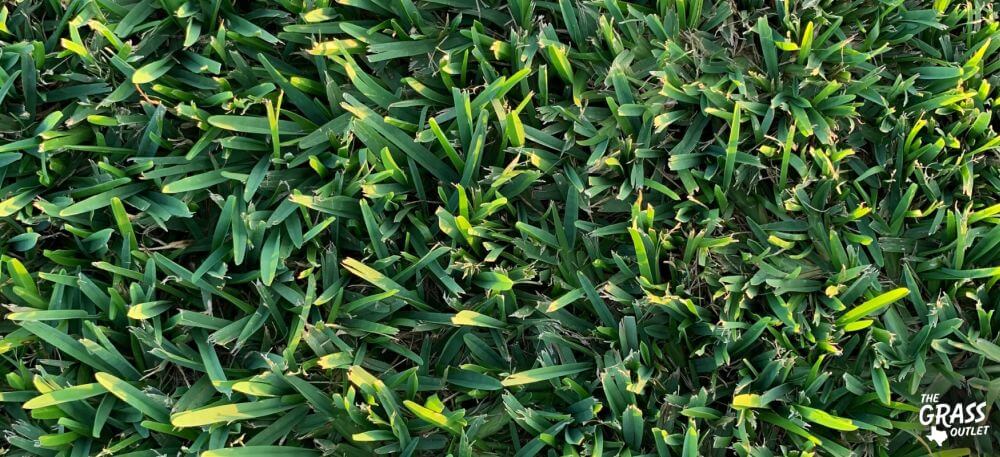
What Is St Augustine Grass?
St. Augustine grass is a type of turf grass that is commonly used for lawns in warm climates, such as in Texas and other areas along the Gulf coast. It’s a coarse-textured grass that can tolerate medium to heavy traffic and is salt tolerant. It also has a high tolerance for droughts, making it ideal for humid and subtropical climates, and can be propagated by sod, plugs, or sprigs.
What Does St Augustine Grass Look Like?
St. Augustine grass is popular for its wide-bladed and coarse texture—which gives its traditional Texas lawn appearance—as well as its deep green color. It’s also known as “carpet grass” because of its soft density when irrigated and maintained properly.
What Are The Advantages Of St Augustine Grass?
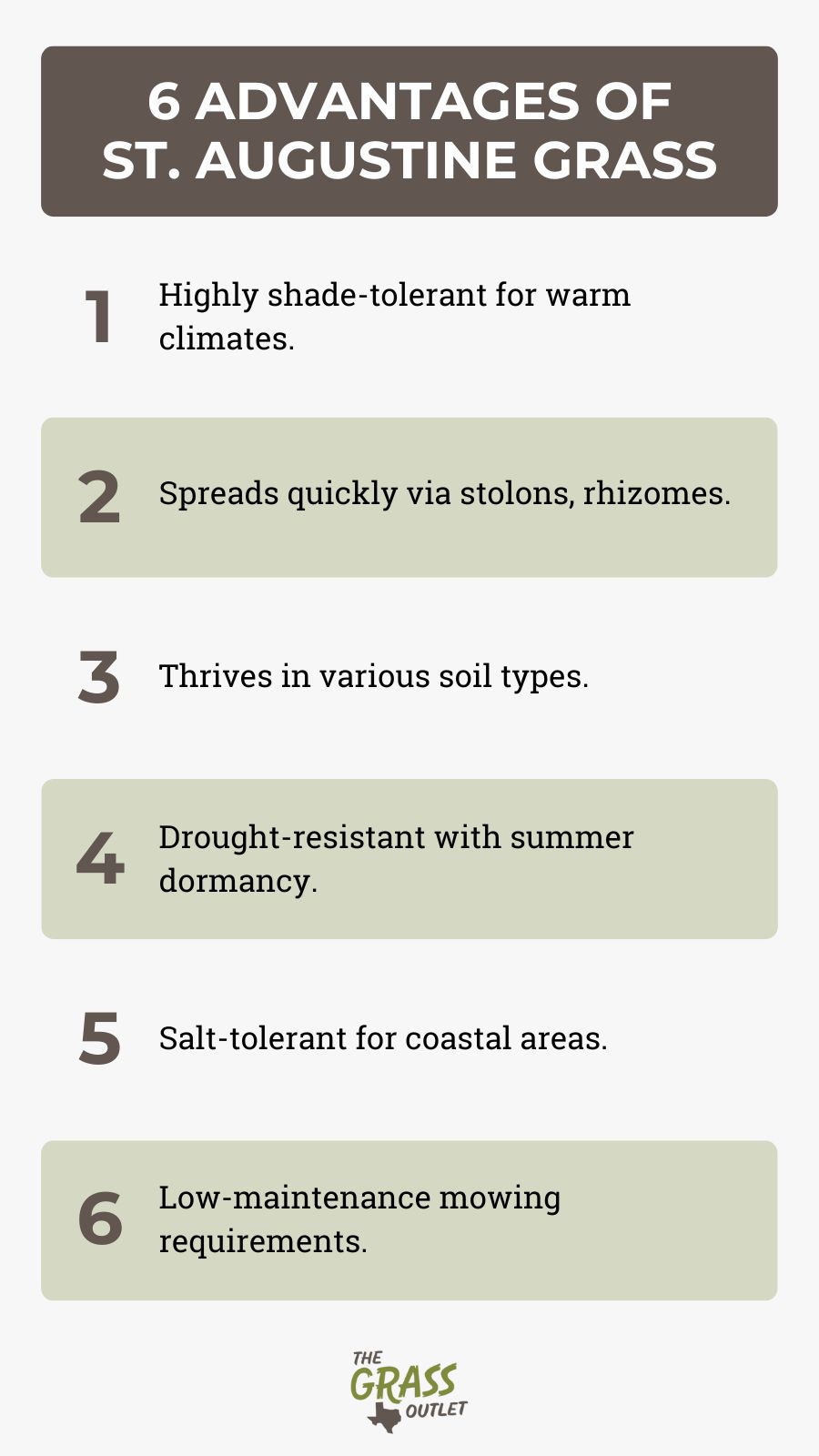
St Augustine grass has many benefits. For one, it’s one of the most shade-tolerant warm-season grasses. St. Augustine can spread rather quickly through stolons and underground rhizomes. It also grows well on a variety of soil types and pHs and will survive periods of drought and high temperatures by going into summer dormancy. Last but not least, it’s also salt tolerant and low-maintenance, requiring low to moderate mow frequency depending on weather and season.
What Are The Different Varieties Of St. Augustine Grass Available In Texas?
The most common varieties of St. Augustine grass in Texas are Palmetto grass, Texas Native grass, and Raleigh St. Augustine. Palmetto is the most shade tolerant of the varieties, while Raleigh is the most cold-tolerant. Texas Native is a type of St. Augustine grass that can be found growing naturally in different areas of Texas because of its high shade and salt tolerance. Effective maintenance for all St. Augustine grasses, including Raleigh, Palmetto, and Texas Native, involves proper irrigation, fertilization, and mowing practices to ensure a healthy, vibrant lawn.
Which type is better?
Of the three varieties of St. Augustine grass in Texas, Palmetto & Texas Native are hardier during drought and are less susceptible to fungal lawn diseases than Raleigh. They also green up fast and stay green longer during the growing season, as well as require about an hour less of direct sunlight.

Does St. Augustine Grass Have Advantages Over Other Types Of Warm Season Grasses?
Yes. In comparison with Zoysia, a shade-tolerant, slow-growing grass that is often used for golf courses and lawns, St. Augustine is cheaper and more cold-tolerant. Palmetto & Texas Native St. Augustines have very similar shade tolerance. It also spreads more quickly, which makes it better suited for larger and high-traffic areas because its grow-back rate is great.
Moreover, if we compare Bermuda vs St. Augustine grass, a fast-growing, drought-tolerant grass type used for golf courses and lawns, St. Augustine is better at choking out weeds and needs less nitrogen fertilizer to thrive. Unlike Bermuda grass, it can also grow in the shade.
When to Plant St. Augustine Grass Sod in Texas?
The best time to plant St Augustine grass in Texas is early spring through early summer, from about mid-March to late June. This is when the soil temperatures are warm enough to promote quicker root establishment and growth. It is also important to prepare the soil before planting and to fertilize and water regularly once the sod is planted.
Can You Put St. Augustine Sod Over Existing Grass?
While it’s possible to lay St Augustine sod over an area where the grass was grown before, you’ll want to kill off any existing grass before laying your sod, as competition between the two can cause problems. Also, proper ground prep is essential to healthy establishment & longevity. Further, extra care must be taken to ensure the sod is properly watered and fertilized to help it establish a strong root system. You can find more info about preparing your yard for new grass in our Grass Care articles.
Is St Augustine Grass Good For Dogs?

Yes, as a matter of fact, St Augustine grass generally is considered to be a good grass for dogs for a few reasons. It’s known for its lush, thick texture, its ability to stand up to heavy foot traffic, its capacity to lower ambient and soil temperatures, and its resistance to many of the common diseases that can affect other types of grasses. It is also far less susceptible to dog urine burn, which can cause unsightly spots on other turf lawns. As long as your grass is properly maintained, St Augustine grass can provide a beautiful, durable surface for your dog to enjoy.
Where To Buy St Augustine Grass In Austin Or San Antonio Texas?
If you’re looking for the best St Augustine Grass in Austin or San Antonio, Texas, look no further than The Grass Outlet! We’re a family-run sod farm in the heart of Central Texas that offers a wide selection of quality sod. We also provide easy-to-use grass comparison tools to help our customers determine which type of grass is best for them and offer delivery services to ensure our customers receive their grass in a timely and efficient manner.
If you’re looking for quality St Augustine sod in Austin or San Antonio, Texas, give us a call to schedule your delivery today!










